Nano-encapsulated Iron and Folic Acid-Fortified Functional Yogurt Enhance Anemia in Albino Rats
- PMID: 33898503
- PMCID: PMC8058429
- DOI: 10.3389/fnut.2021.654624
Nano-encapsulated Iron and Folic Acid-Fortified Functional Yogurt Enhance Anemia in Albino Rats
Abstract
Iron deficiency anemia (IDA) is a major health concern in developing countries, and these see an increased incidence in pregnant women and children in particular. The contribution of dairy products as natural products in drug delivery approaches is inspiring. This study aimed to analyze the application of iron (Fe) and folic acid (FA) bovine serum albumin-nanoparticles (BSA-NPs) as anti-anemic pharmacological agents that fortify stirred functional yogurt (SFY), comparing these with a plain control and SFY fortified with Fe and FA in free forms. The physicochemical, cytotoxicity, microbiological, viscosity, oxidative interactions, microstructural, sensorial analyses, and bioavailability properties of IDA-induced Albino rats were examined. The Transmission Electron Microscope (TEM), Zetasizer, and Scan Electron Microscope (SEM) were applied. Nanocapsule-fortified SFY showed an enhanced apparent viscosity, water-holding capacity, microstructure, least lipid oxidation, and overall sensorial acceptability. Feed that included Fe + FA nanocapsule-fortified SFY (G6) succeeded in restoring hemoglobin (16.53 gdL-1), iron (109.25 μgdL-1), ferritin (33.25 μgdL-1), and total protein (8.6 gdL-1) at the end of the 4-week feeding period, with significant competition revealed in calcium and zinc absorbance. Nanocapsule-fortified SFY showed no adverse effects or architectural alterations in the liver, kidney, or spleen, as indicated by biochemical and histological examinations. Bovine serum albumin-nanoparticles (BSA-NPs) of iron (Fe) and folic acid (FA) can be recommended as anti-anemia supplements in different functional food applications.
Keywords: anti-anemia; bioavailability; food supplements; nano-encapsulated Fe and FA; natural products; stirred functional yogurt.
Copyright © 2021 Darwish, Soliman, Elhendy and El-Kholy.
Conflict of interest statement
The authors declare that the research was conducted in the absence of any commercial or financial relationships that could be construed as a potential conflict of interest.
Figures

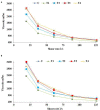
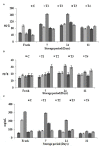


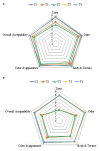
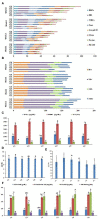
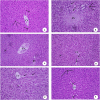
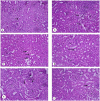

Similar articles
-
Arthrospira platensis (Spirulina) fortified functional foods ameliorate iron and protein malnutrition by improving growth and modulating oxidative stress and gut microbiota in rats.Food Funct. 2023 Jan 23;14(2):1160-1178. doi: 10.1039/d2fo02226e. Food Funct. 2023. PMID: 36601898
-
The bioavailability of iron picolinate is comparable to iron sulfate when fortified into a complementary fruit yogurt: a stable iron isotope study in young women.Eur J Nutr. 2020 Jun;59(4):1371-1378. doi: 10.1007/s00394-019-01989-4. Epub 2019 Jun 11. Eur J Nutr. 2020. PMID: 31187261 Free PMC article. Clinical Trial.
-
One-Pot Facile Fabrication of Bioavailable Iron Nanoparticles with Good Biocompatibility for Anemia Therapy.Med Sci Monit. 2018 Sep 14;24:6449-6455. doi: 10.12659/MSM.909591. Med Sci Monit. 2018. PMID: 30215387 Free PMC article.
-
The potential of encapsulated iron compounds in food fortification: a review.Int J Vitam Nutr Res. 2004 Nov;74(6):453-61. doi: 10.1024/0300-9831.74.6.453. Int J Vitam Nutr Res. 2004. PMID: 15743021 Review.
-
[Review by expert group in the diagnosis and treatment of anemia in pregnant women. Federación Mexicana de Colegios de Obstetricia y Ginecología].Ginecol Obstet Mex. 2012 Sep;80(9):563-80. Ginecol Obstet Mex. 2012. PMID: 23243836 Spanish.
Cited by
-
Effect of iron-fortified jamun leather on the Asunra-induced anemia in Sprague Dawley rats.Front Nutr. 2023 Jun 13;10:1195981. doi: 10.3389/fnut.2023.1195981. eCollection 2023. Front Nutr. 2023. PMID: 37384107 Free PMC article.
-
Iron oxide nanoparticles carried by probiotics for iron absorption: a systematic review.J Nanobiotechnology. 2023 Apr 10;21(1):124. doi: 10.1186/s12951-023-01880-9. J Nanobiotechnology. 2023. PMID: 37038224 Free PMC article.
-
Physicochemical and sensory characterization of functional synbiotic Labneh fortified with the bacteriocin-producing Lactiplantibacillus plantarum strain GA7 and nano-encapsulated Tirmania pinoyi extract.Microb Cell Fact. 2025 Jan 13;24(1):18. doi: 10.1186/s12934-024-02631-7. Microb Cell Fact. 2025. PMID: 39800683 Free PMC article.
-
Iron Absorption: Factors, Limitations, and Improvement Methods.ACS Omega. 2022 Jun 10;7(24):20441-20456. doi: 10.1021/acsomega.2c01833. eCollection 2022 Jun 21. ACS Omega. 2022. PMID: 35755397 Free PMC article. Review.
-
Functional products fortified with probiotic LAB isolated from Egyptian dairy sources showed hypolipidemic effects in Albino rats.PLoS One. 2022 Mar 2;17(3):e0263241. doi: 10.1371/journal.pone.0263241. eCollection 2022. PLoS One. 2022. PMID: 35235577 Free PMC article.
References
-
- WHO . WHO EMRO | Programme Areas. Cairo: WHO. (2010).
-
- Darwish AMG, Al-Jumayi HAO, Elhendy HA. Effect of germination on the nutritional profile of quinoa (Cheopodium quinoa Willd.) seeds and its anti-anemic potential in Sprague-Dawley male albino rats. Cereal Chem. (2021) 98:315–27. 10.1002/cche.10366 - DOI
-
- Scott KJ. Micronutrients in milk and milk-based products. In: Renner E. editor. Micronutrients in Milk and Milk-Based Food Products. London, UK: Elsevier Applied Science; (1989). p. 71–123.
LinkOut - more resources
Full Text Sources
Other Literature Sources
Research Materials
Miscellaneous

